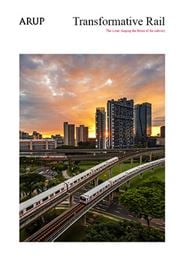The quality of rail services varies significantly around the world. What is common, though, is the call for continual improvement. The pressure to perform is rising and competition from other means of transport intensifying. However, these concerns are not unique to rail; in the search for new solutions the aviation sector may provide some interesting ideas.
Digital technologies offer great potential to address many challenges, provided they are rolled out properly. One critical factor that can deliver multiple benefits to operational decision-making (and directly affect the performance) is being able to share a single source of the truth across the sector. The introduction of such an approach in the aviation industry relating to aircraft turnaround has led to significant improvements.
Historically, the aircraft turnaround process was (and in many places still is) inefficient, adding to the pressure on the already congested runway, taxiways and stands. To resolve this, an initiative called Airport Collaborative Decision-making (A-CDM) was developed. A-CDM shared data across the airport business processes for the benefit of passengers, airport operators, airlines and all other third parties associated with the aviation process. This was one of the first initiatives that provided a single version of the truth to the airport system and started the journey towards the ‘real-time airport’.
Critical to these developments was the sharing of data. Without sector-wide collaboration, it would have not been possible to achieve the level of operational efficiency or the level of service expected by the passengers. Coordination by the intergovernmental European Organisation for the Safety of Air Navigation (Eurocontrol) and introduction of a common, standardised traffic management system were central to the success of a single source of truth creation.
A-CDM was a voluntary process that has now been adopted by 28 European airports, resulting in a significantly more efficient use of airport assets. It also positively affected the performance of the ground handlers and airlines.
The experience from aviation provides a proof of concept. It is worth considering how these best practices can be transferred into the rail sector. There are, of course, differences; the level of fragmentation is much higher in rail, for example. This fragmentation is not likely to pose a challenge in terms of digital capability, but it does create an absence of a common vision which may hinder successful integration.
 ;
;

